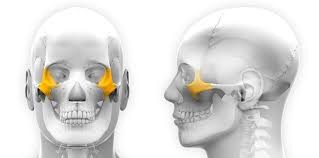If the zygomatic arch was broken, where is this fracture located?
Shoulder.
Wrist.
Knee.
Face.
Correct Answer : D
The zygomatic arch, also known as the cheekbone or zygoma, is a prominent facial bone that forms part of the structure of the face. A fracture of the zygomatic arch would be located in the facial region. The zygomatic arch extends horizontally from the area near the ear to the region of the cheekbone, contributing to the overall shape and support of the face. Fractures of the zygomatic arch can result from trauma to the face, such as blunt force impact, and may cause pain, swelling, deformity, and difficulty with chewing or facial movement.
HESI A2 Exam Quiz Bank
TEAS 7 Exam Quiz Bank
Find More HESI Questions
HESI A2 Questions: We got the latest updated HESI A2 Questions
100% Money Refund: 100% money back guarantee if you take our full
assessment pass with 80% and fail the actual exam.
Live Tutoring: Fully customized live tutoring lessons.
Guaranteed A Grade: All students who use our services pass with 90%
guarantee.
Related Questions
Correct Answer is C
Explanation
The cellular membrane, also known as the plasma membrane or phospholipid bilayer, is primarily composed of lipids, specifically phospholipids. Phospholipids are molecules with hydrophilic (water-attracting) heads and hydrophobic (water-repelling) tails. These phospholipids arrange themselves into a bilayer structure, with the hydrophilic heads facing outward toward the aqueous environments inside and outside the cell, while the hydrophobic tails are sandwiched in between. Additionally, the cellular membrane contains proteins, carbohydrates, and cholesterol, which play various roles in maintaining membrane structure, cell signaling, and cell recognition.
Correct Answer is D
Explanation
The aerodynamic nature of a bird's wing is an example of the central theme in biology known as "Structure and function." This theme emphasizes the relationship between the form and function of biological structures. In the case of a bird's wing, its structure, including its shape, size, and arrangement of feathers, is intricately related to its function, which is to provide lift and thrust for flight. The specific structure of the wing, such as the curvature of the airfoil shape, enables it to generate lift by creating a pressure differential between the upper and lower surfaces of the wing when air flows over it. Thus, the structure of the wing is adapted to its function of facilitating flight in birds.
Correct Answer is B
Explanation
Strep throat is a bacterial infection caused by group A Streptococcus bacteria, specifically Streptococcus pyogenes. It is a common infection that affects the throat and tonsils, causing symptoms such as sore throat, fever, swollen lymph nodes, and difficulty swallowing. Strep throat is highly contagious and spreads through respiratory droplets when an infected person coughs or sneezes. It is typically treated with antibiotics to prevent complications and reduce the risk of spreading the infection to others. Other diseases caused by bacteria include tuberculosis, pneumonia, urinary tract infections, and bacterial meningitis.
Correct Answer is B
Explanation
To find the complementary mRNA strand, we need to substitute the DNA nucleotides with their complementary RNA nucleotides. In RNA, adenine (A) pairs with uracil (U), cytosine (C) pairs with guanine (G), guanine (G) pairs with cytosine (C), and thymine (T) pairs with adenine (A). Therefore, the complementary mRNA strand to the given DNA sequence "CAGGCTAAG" would be "GACCGUAAC".
This question was extracted from the actual HESI A2 Exam. Ace your TEAS exam with the actual HESI A2 Exam questions, Start your journey with us today
Visit Naxlex, the Most Trusted HESI Prep Platform With Guaranteed Pass of 90%.
Money back guarantee if you use our service and fail the actual exam. Option of personalised live tutor on your area of weakness.

